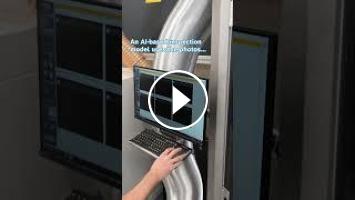Quality control using artificial intelligence: At our Hildesheim plant in Germany, electric motor parts called stators are manufactured. To check the quality of the parts, we use AI-based image recognition, a highly reliable system that has been trained to distinguish whether a part is OK or not based on photos of the stators taken during the manufacturing process.
To train a system like this, a large database of imagery of different defect types is needed. But how do you get enough images of the faulty parts when manufacturing quality is too high to yield enough images of damage, and without deliberately damaging parts? The answer: Generative AI! In total, we generated some 15,000 artificial images using generative AI, based on a two-digit number of real images for each fault type. The AI-based image recognition system uses this database to learn the characteristics and features of good and faulty parts. When presented with new photos, the AI applies its knowledge and decides within a fraction of a second whether a part is defective. ???? Learn more: https://bit.ly/GenAIManufacturing #HM24
To train a system like this, a large database of imagery of different defect types is needed. But how do you get enough images of the faulty parts when manufacturing quality is too high to yield enough images of damage, and without deliberately damaging parts? The answer: Generative AI! In total, we generated some 15,000 artificial images using generative AI, based on a two-digit number of real images for each fault type. The AI-based image recognition system uses this database to learn the characteristics and features of good and faulty parts. When presented with new photos, the AI applies its knowledge and decides within a fraction of a second whether a part is defective. ???? Learn more: https://bit.ly/GenAIManufacturing #HM24
- Category
- Artificial Intelligence
- Tags
- Bosch, Bosch Global, Manufacturing












Comments